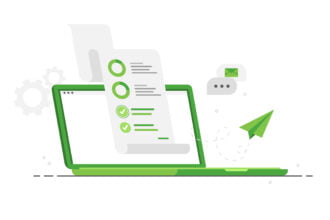 One of the biggest challenges facing businesses today is the intimidating nature of big data.
One of the biggest challenges facing businesses today is the intimidating nature of big data.
 One of the biggest challenges facing businesses today is the intimidating nature of big data.
One of the biggest challenges facing businesses today is the intimidating nature of big data.
Many decision makers suffer from the so-called “paralysis by analysis” as they struggle to decide how best to sample and act on the petabytes of structured and unstructured customer data that’s available to them today.
Companies need to be able to cut through the chaff and enable decision makers to view key business and customer trends in near real time so they can act quickly and decisively.
Dimension-free data exploration enables end users to utilize contextual and social analytics capabilities without having to request assistance from their IT departments. This approach blends the strengths of visual data discovery with collaborative analytics for improved and more rapid decision making and borderless analytical capabilities.
After all, the most effective decisions – those that are considered and debated from multiple angles and viewpoints – are those that are developed through brainstorming. Because of this, it’s important for dashboards and analytics tools to support collaboration so that companies are able to harness the collective wisdom of a team.
These decisions can be reached more easily and logically through the use of visual data investigation capabilities that help make data insights more contextual for end users.
By analyzing data in context, data scientists and business leaders are able to focus on the most relevant data for a particular set of circumstances and not get overwhelmed with information overload as can often occur when companies attempt to make use of big data.
For example, let’s say a work team for a consumer packaged goods company is examining customer comments made in social channels to determine customer sentiment about a laundry detergent it sells in multiple markets. Dimension-free analysis offers the team access to granular data regarding customer comments without imposing response time constraints.
By providing team members the ability to parse data by customer segment, the team can more quickly and effectively determine whether high-value/repeat customers have expressed any concerns about the detergent’s “quality” or “value” relative to competing brands.
This ability to pinpoint the most important information to act on enables business leaders to streamline their uses of available data and achieve time-to-market improvements.
Data scientists and business leaders need intuitive, easy-to-use tools to help make sense of the enormity of data that’s available to them. Expanding the universe of potential data sources while placing the information in greater context can only help organizational leaders make decisions faster and more effectively.
Next Steps
To learn more about how to make better business decisions using predictive analytics register for our complimentary webcast with featured speaker Lou Bajuk-Yorgan (@LouBajuk), Senior Director of Product Management at Tibco Spotfire. In this webcast, you’ll discover how leveraging a single analytics and data discovery platform will empower anyone, anywhere, to make insightful decisions – with requiring IT support.








